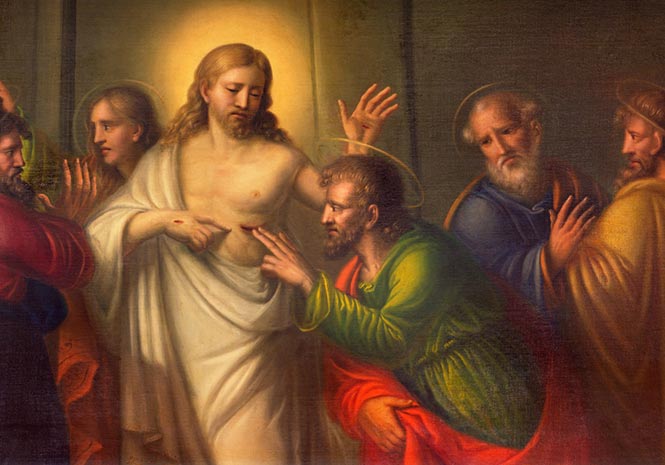
‘Seeing,’ they say, ‘is believing,’ yet how often do we also hear ‘I really couldn’t believe my eyes,’ indicating that at times, even seeing can leave us struggling to believe.
And how much poor old Thomas has suffered down the centuries from criticism of his perfectly sensible adoption of that principle of putting hard evidence ahead of blind faith, earning himself, as a result, the title of ‘Doubting Thomas.’
For Thomas had seen Jesus die. There was absolutely no doubt.
The cause to which he’d devoted himself was finished; its leader executed and buried.
Thomas had seen it all with his own eyes, and utterly despondent, had given up and gone off to try and rebuild the life he’d abandoned three years earlier.
And then he started hearing claims that Jesus wasn’t dead after all, but had been seen alive by many of his former colleagues.
‘Impossible! You’re having me on! It’s a wind-up!’
These, and many similar thoughts must have tormented him as Thomas, probably with a mixture of anger and hurt declared “Unless I see the nail-prints in his hands and put my finger in them, and put my hand into the hole made by the spear in his side, I won’t believe.”
Was that so unreasonable? Why, many of us regularly react in similar fashion, refusing to believe the possibility that Jesus could ever have come back to life after having been so brutally and effectively killed.
The thought simply defies experience, so we, like Thomas, often find it impossible to accept.
Yet, despite his doubts Thomas, perhaps reluctantly agreed to meet with his friends the following Sunday, when to his astonishment, Jesus, simply appeared, very much alive, and offered his hands and side for Thomas to hold. And for Thomas, seeing, really was believing.
He didn’t need to touch. The sight was sufficient to convince him as he gasped “My Lord and my God.”
There was, of course no other conclusion. For God alone has power over death, and in that instant Thomas at last appreciated who Jesus really was, and that changed his life.








